It’s a controlled-text early reader that plays a bit with sound-alike words and homonyms. It basically tells the story of a juggling toucan juggling cans. It has a certain element of the tongue twister about it that makes it kind of fun, but sometimes the use of the same words in different contexts makes building meaning from the story a bit confusing.
Sister Corita’s Words and Shapes
It’s a nice little picture book biography of a little-known (at least not to me) individual. Perhaps the subject is more well-known in art circles. Regardless, it would certainly make a nice addition to a collection with a strong art or religious focus. The story is told in a simple and direct manner for young children, infused with a sense of the joy and hope that it describes the Corita striving to share. The author’s note in the back is important to fleshing out the context for the story told in the main body of the book. It would have been enhanced by a few actual photos of the real individual and/or some samples of her art.
I am Courage: A Book of Resilience by Susan Verde
I am Courage is a must read, for any age, with its universal themes of learning to believe in ourselves and face what challenges us, including our fears. But this time, the life lesson is to do it together! The star character, a young girl, learns that courage is not the absence of fear, but the strength to try new and difficult things, or to stand up for others, even and especially when we are afraid. Simple, uplifting messages are skillfully illustrated showing children who find courage to keep riding even after they stumble, who share doubts with friends, and who always get up and try again whenever they fall. The book includes an appendix with multiple, easy to use techniques for calming ourselves with breath exercises and gathering strength with yoga poses. Children and adults alike can incorporate the simple messages to decrease stress and increase courage. I am Courage motivates and the illustrations inspire us all to cultivate resilience by kindly encouraging ourselves and leaning on each other. This way we can share our inner worries and triumphs, and others can share with us, leading to the creation of a stronger community together. A wonderful addition to any social and emotional learning collection, this book can be read again and again.
I Can Make Marvelous Movers
Three makerspace projects are given in step-by-step precision, including a list all of the materials needed to complete each project. All three of these projects deal with motion, as the title indicates. Each project is presented with a number of variables so the maker can take their project to a new level or use the variables to make hypothesis for possible science fair entries. “Like all inventors, you will try out your machines. Then you will change your designs to make them even better.” (6)
After the project section of the book, there is a “Masters of Motion” section about six people made famous because of their work with motion. This is followed by a “Timeline: Machines that Move” from 3200 BCE – 2012. And finally a four word glossary and eight entry index.
The projects were photographed with a diverse set of young intermediate school student models.
I am only sorry I did not have access to an elementary age student to try out these projects due to the 2019 Covid pandemic.
It Doesn’t Have to Be Awkward
This books talks about the importance of consent in relationships, and other topics avoid with their children. Written by a father / daughter duo (father is a physician and daughter is a high school writing teacher), the book does a good job in breaking these topics down into easily understandable lessons and is a good read for any age, especially parents who are wanting resources to teach their children.
Topics include: boundaries, consent, sexuality, friendship, bullying, sex, and trauma.
The authors provide recommended resources for further information.
Vampires, Hearts & Other Dead Things
Victoria just recently found out that her dad has cancer and ever since she was little, she and her dad have been obsessed with finding vampires. After her dad gets diagnosed, she goes to New Orleans to try to find one, as New Orleans was the first place in the United State where vampires were found. Victoria’s goal is to find a vampire, have it turn her into a vampire and save her dad’s life,
This story is a light read. The author does a good job of writing of vampire book that doesn’t make you cringe. She has a unique take on immortality and the cost of living forever.
Where Three Oceans Meet by Rajani Larocca
Where the Oceans Meet is an endearing tale of an intergenerational road trip seen through the eyes of a young girl who has traveled with her mother to Southern India to visit her Paati (grandmother). The story symbolically braids together three generations, living oceans apart, who take a trip to visit special friends and places as they eat their way through Southern India heading for the tip of the country where three oceans meet. Highlights abound of a beautiful land full of whimsical patterns in fabrics, foods and gardens. The immigrant experience of a generation returning to their homeland is vividly expressed through illustrations where you feel the love, traditions and intimate relationships regardless of time and distance apart. The book includes a brightly illustrated map bringing to life the route, colorful places and local foods, including boiled peanuts carefully wrapped in folded newspaper cones. Any student who has ventured to visit new places, together with family, will relate to the unexpected and in between moments that accentuate a road trip and fill us all with lasting memories.

Child of the Flower-song People: Luz Jimenez, Daughter of the Nahua
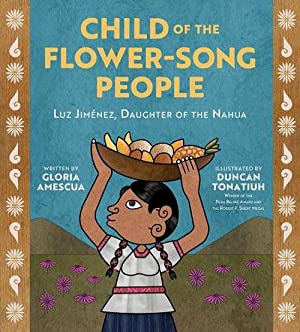
Luz Jimenez was born in the late 1800’s in the village of Milpa Alpa, a short distance from Mexico City. She was part of the indigenous Nuahac people and learned the language, stories and customs of her ancestors. She suffered the same fate as many indigenous people of her era – placement in government run schools where she had to speak Spanish and wear unfamiliar clothing. Her father was killed during the Mexican Revolution in 1911 and her mother moved the family to Mexico City. It was here that Luz realized her dream of becoming a teacher. Her teaching role was not as a typical school teacher, but as a teacher of her ancestral culture and language to the world. She became a model for many of Mexico’s leading artists of the time, including Diego Rivera, who saw her classic Nuahac beauty as something to capture on canvas, in a photograph or as a sculpture. She became friends with these artists and others – scholars and anthropologists, who wanted to learn about her culture and language. She took them back to her village and taught them her ancestors’ stories, language and customs. This knowledge is part of the history of Mexico and Luz is often referred to as the “Soul of Mexico”.
This well-written, informative book tells the story of Luz’s life in an accessible way without being too text-heavy. Accompanying illustrations by Duncan Tonatiuh are reminiscent of indigenous Mexican artwork and add a rich tone to the story. An author’s note, artist’s note, glossary, bibliography and timeline of Luz’s life are important added features. I appreciate the photo of Luz modelling for a group of artists on the artist’s note page. The only pieces missing are some examples of the artists’ work with whom Luz worked. It did lead me to research her life and find those examples. So, perhaps readers will do the same.
Wow in the World. The How and Wow of the Human Body: From Your Tongue to Your Toes and All the Guts in Between
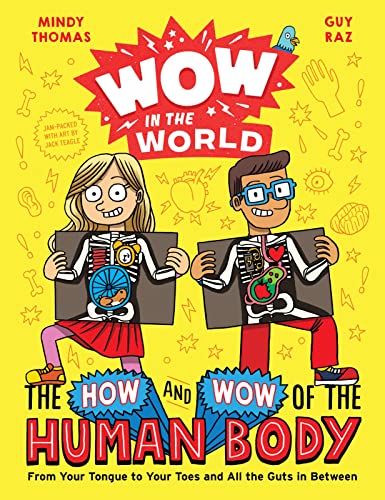
You can find just about any answer you need to your questions in this fast-paced nonfiction book about the human body. It begins with the head and moves its way through the systems, stopping here and there to deliver some facts that will add a “Wow” factor (actually, more of a “Gross” factor) to the information. It is illustrated with cartoon-like characters and body parts. The characters are diverse, with differing skin tones and abilities.
A glossary, bibliography and source notes are available. Something really cool to note is a page of QR codes that lead to relevant episodes of the authors’ podcasts of Wow in the World on NPR.
There is a lot of information to take in through these 188 pages. But, kids will likely be engrossed in the gross facts added to the information presented. A rather vivid description (and illustrations) of various types of poop on the Bristol Stool Scale is one example of the extra stuff that kids will love to read about and share with unsuspecting adults. Now, I know seven types of feces and I might just share that information, too!
This book is part of a series called “Wow in the World”, in which there are currently two books and a third due out in April 2022.
Lost Things by Carey Sookocheff
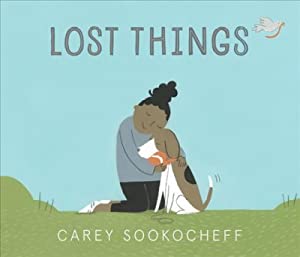
This is a story of things lost and found, although sometimes by someone else. It begins with a girl walking her dog, who is grasping stick in his mouth. He notices a squirrel nearby and breaks free to chase it. The girl loses her dog and her hair ribbon. The dog loses his stick and the squirrel loses his acorn. The hair ribbon is found by a bird, who adds it to his nest. A child watching the bird drops his teddy bear. And, so the story continues, finally coming to an end when the girl finds her dog and the squirrel finds his acorn.
This is a circular story that comes to an end near the beginning. It is gently written and illustrated, with the lost things bearing a similar color. The story shows us that sometimes lost things can be found and treasured by others who might need them. The story moves through the community and the characters are hinted at in the pages preceding their active participation. There is so much to see and notice in a book with few words and spare illustrations. It’s a gentle, lovely story that will encourage much discussion.
Crazy Horse and Custer: Born Enemies, by S.D. Nelson
A double biography about two imperfect men who were born within a year of each other, lived on opposite sides of historical issues, and died within a year of each other. Both are flawed because of the prejudices from which they were raised. Both were leaders for their respective cultures who were both celebrated and reviled at different times in their lives. They had much in common though they despised the other. I found this book interesting and hard to read because of the biases of each of the historical figures. In that way, I think the author did a splendid job of helping the modern reader see both sides of the westward movement – from the Eurocentric, white point of view to the Native American perspective. I appreciated the map of the region placed in the center of the book and referred to it often. Photographs and sketches were well placed to help the reader visualize the historical events. The book also includes a timeline, an index, and an extensive bibliography of many of the historical details included in the accounts of these men’s lives. It’s an important book to have on library shelves to give youn modern historians perspective on the westward expansion in this country.

We Give Thanks by: Cynthia Rylant
We Give Thanks written by Cynthia Rylant and illustrated by Sergio Ruzzier is an exceptional book especially for early readers. The book states why we should give thanks anytime, anywhere and encourages kindness. The creative illustrations add great visuals on how to give thanks. The book rhymes and has a rhythm that flows nicely. The beautiful illustrations make you want to turn the page to see more. Early readers will love this book, as will older, more experienced readers..
The Chicken House By: Doreen Cronin
The Chicken House written by Doreen Cronin and illustrated by Stephen Gilpin is a sweet and amusing story for beginner readers. Sugar, Sweetie, Poppy and Moosh, an interesting chicken family, hang out in J.J. the dog’s doghouse and play. The chickens’ unique characters are fun to read about and show the value of family, and the cute illustrations make this story even more heartwarming. Early and intermediate readers will enjoy the new vocabulary. All readers will enjoy the one-of-a-kind characters and their corresponding illustrations.
Barb: The Last Berzerker. By: Dan & Jason
This graphic novel, Barb, The Last Berzerker, by Dan & Jason, is sure to be appreciated by early readers due to its bold colors and silly vocabulary. Barb and Porkchop must save their friends from the evil Witch Head before it’s too late. The readable layout lets the captivating art shine. Both a graphic novel and comedy, this will delight those looking fora casual read while still sneaking in a classic moral. The illustrations are complicated, with fairly intricate line work, yet still simple enough to focus on. Primary readers will gawk at the art and stay tuned until the very last page, and even adults will enjoy reading this to their children. Although this is geared towards early readers, everyone who appreciates a good quest will love this book. Containing a fierce and unique storyline, this graphic novel is a must-read for all early readers.
Snakes Smell With Their Tongues! And other amazing facts. By: Thea Feldman
Snakes Smell With Their Tongues! and Other Amazing Facts by Thea Feldman is sure to appeal to early intermediate readers. Lee Cosgrove complements the documentary images and facts with eye catching comic book based illustrations, backgrounds and text. Snakes Smell With Their Tongues! and Other Amazing Facts, provides an appealing informative, and interesting narrative that describes numerous facts and characteristics relating to snakes. The simple and easy to read text complemented by the vivid images and the bubbly art style of this book provides an engaging and striking read for younger readers. More intermediate readers will enjoy the interesting facts that this book includes, while younger readers will like all the images, art, and easy to read text. This non-fiction book is one that I would suggest to younger readers with an interest in biology, animals, and snakes and reptiles; it’s a nice and easy book to pick up and enjoy.
Together We Caught Fire
What are the chances that your father would marry the mother of your secret crush and he would move into your house? But this is not what the cover art falsely sells it to be. It is so much better. Eva Gibson gives us Elaine Jamison — or Lane. Lane is complex. Lane has had a rough go. She found her mother in their bathroom dead from a brutal suicide. This brings nightmares on a regular basis. Then her father does remarry. And her new step-brother, Greyson, whom she secretly infatuates over, is dating her good friend Sadie. Lane doesn’t let her secret be known and continues to hang out with the couple which leads her to meet Connor, Sadie’s older brother. Sparks will fly between Connor and Lane, leaving her overwhelmed with emotions — but not just about the boys. Issues of homelessness, religious fundamentalism, and drug abuse will all rear their heads in addition to the grief around Lane’s mother’s death. Lane is raw and more mature than the average teen. The Connor vs. Greyson battle will come to the forefront eventually but it is not the book’s focus. Situations explode and then take time to resolve, like real life. This reader was happily surprised that the book was better than the cover and title and will recommend it to high school students.
Sabrina Sue Loves the Snow
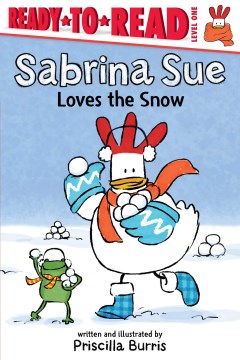
Sabrina Sue is an adventurous hen, who decides one day to see snow. She is too hot on the farm and wonders what snow is like (soft? crunchy?). Her fellow farm animals think it’s a bad idea and tell her that she is silly. She acknowledges the silly part, packs her bag and is on her way via truck, train and hiking. She and a frog that tags along finally find snow and have a glorious time. But, Sabrina Sue thinks about her friends and returns to the farm, bringing a snow globe and her froggy friend with her. She’s happy to be home, but she knows she’ll visit the snow again one day.
Bright, bold illustrations add to this fun story about this daring hen. Word bubbles add to the cartoon-like feel of the book. Text is simple and the font is large, which is perfect for new readers. The book is billed as a “Level One Ready to Read” book and it fills the niche nicely. This is one of a growing set of Sabrina Sue stories. Buy it for your early readers, because who doesn’t love a good chicken story?
A Walk in the Words
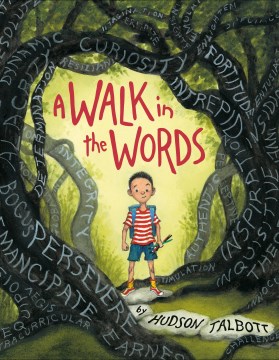
A young artist, who can express himself so eloquently through his drawings is, by his own definition, “the slowest reader in his class”. While other students were turning the pages of their books, he is still on the first sentence. He was intimidated by the words and worried that his classmates will find out that he can’t keep up with them. A page of text seems like wall that he can’t get over.
He decides to take reading one word at a time, breaking down bigger words into smaller pieces and letting the words that he knew lead him through the story. Slowly, he gains confidence and reading is no longer scary. He learns that he doesn’t have to be a fast reader. There were lots of amazing people that were slow readers, like Albert Einstein and Picasso.
He learns that his pictures and words can be a powerful combination. He can draw horses and the words can make them breathe and run. While reading is still a slow process, he understands that they can carry him along on adventures. They are to be enjoyed, not feared.
This story beautifully describes the author’s struggle with dyslexia and his journey through the winding path of learning to read. Illustrations (watercolor, pencil and ink) provide perfect imagery for the author’s story. Aggressive-looking books, twisted word trees and huge walls of text slowly change to accessible stone word paths and an image of the boy tearing down the text wall.
An author’s note details his own struggle with dyslexia, which was a painful experience in a time when those with dyslexia were just called “slow”. This highly recommended book should be shared with students that struggle to read and their classmates, who will gain a better understanding (and empathy) along the way.
Knight of the Cape
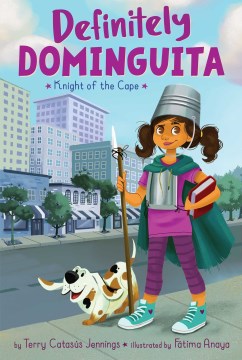
Dominguita loves to read, especially the books that remind her of the books her Abuela (grandmother) brought from Cuba and shared with her. But, her grandmother now lives in Florida with her sister, because she has a hard time remembering things. And, the class bully makes reading in peace difficult. So, Dominguita decides to become a knight (like the hero, Don Quijote, from her grandmother’s book). She figures that her knighthood will do two things: 1). show the class bully that girls can be knights and 2). help her feel closer to her brother and grandmother, because her brother agrees to write the story of her life as knight to send to Abuela.
Being a knight is hard work and Dominguita has some mishaps along the way. But, she has the encouragement and help of the adults around her. She also gains two new friends along the way. And, her trusty steed, aka dog, is a loyal sidekick in her adventures.
The characters are diverse and the story is accessible for younger readers, who will cheer for Dominguita (or Dom Capote, the fearless knight). Black and white illustrations help move the story along and an author’s note at the end explains the tale of Don Quijote and its connection to our heroine, Dominguita.
The 1619 Project: Born on the Water
By Nikole Hannah-Jones and Renee’ Watson, Illustrated by nikkolas Smith
Immediately drawn to this book with the “1619 Project” in the title, I was delighted with the beautiful poems which make up the content of the book. Each poem is thoughtful, of content, vocabulary, rhythm and true to the story of the African American plight in the time of slavery. Vacillating between hope and joy and fear and loss, this book delivers many emotions and helps the ready to understand the feelings of the Africans during this dark chapter of United States history. The reader is taken on the journey from the contented villages of Africa, over the dangerous and deadly ocean, to the new world.
The story begins with a simple school assignment. Students are asked to trace their roots. The young girls asks her grandmother about their family story, but feels ashamed. The grandmother tells her the whole story, with poetry throughout the book, until the girl realizes she has so much to feel proud of.
The term “born on the water” refers to the people who were stolen from their homes, endured the hardship of the crossing of the ocean in the horrific ships, and landed on shore with a new life. Not the one they had been born to, but a new one they had been forced into.
Minus the illustrations, these poems heard by middle schoolers, would be a powerful read by a teacher or parent. The illustrations are bold acrylic, and the artists has a style which is easily recognized from other books. Although this style of art is not what I would have chosen for this poetry book, I honor the authenticity of the illustrator and recognize his talent and many successes.
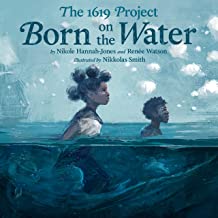
Good Night Ganesha
Written by Nadia Salomon, Illustrated by Poonam Mistry
This beautifully illustrated book is a feast for the eyes! Poonam Mistry has a collection of illustrated books that are all stunning. Her style of rich detail, shape, color, form, and patterning is worthy of the reader’s time. The storyline plot involves a brother and sister going to visit their nana (grandmother) in India, where simple bedtime routines feel like magic. The story is told with some prose and poetry, apparently modeled after Good Night Moon, by Margaret Wise Brown.
Goodnight, humming.
Goodnight, chai.
Goodnight, halo hanging high
The reader will learn some new vocabulary with the Glossary in the back of the book, which can be used to decipher the Hindi words sprinkled throughout the book. This is a great chance to practice glossary skills in an authentic setting.
A recommended book to expand your Eastern Indian library collection, as well as a uniquely illustrated book.
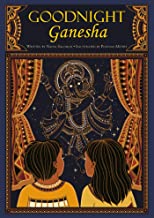
Room For Everyone
Naaz Khan created a wonderful, rhyming, funny tale of a brother, Musa, and his sister, Dada, on their trip to the beach in the daladala, a bus, in Zanzibar. This book is a fun counting book as they continue to add 1, 2, 3 and up to 10 things and people to the daladala. Musa doesn’t think any more can fit, at each stop he says there is no more room, but his sister believes they can fit everyone who needs the lift. By the end of the story when they are adding 10 divers to the bus, Musa is laughing along with his sister and ready to welcome anyone aboard. Finally, they make it to the beach and as everyone spills out, you count backwards remembering all the people and animals and things Musa and Dada made room for along the way.
One of the things I enjoyed most about this book is the representation of Africa in the illustrations. The pictures show so much joy and movement and all the reader can do is giggle along with Musa and Dada as they stuff as many things as possible onto the daladala bus. I also enjoyed how the text was represented, also with alot of movement, using large type-face for some words and arranging the phrases in different places across the page.
The book does have a glossary at the back for a few Arabic and Swahili words that show up in the text. Although it does explain the words, it does not help pronounce them.
I think many kids would find this book funny and it will spark great conversations about different cultures, countries, and language.

Aaron Slater Illustrator
Aaron Slater Illustrator by Andrea Beaty and illustrated by David Roberts is another great addition to the Questioneers collection. In this rhyming story, Aaron Slater is born LOVING stories, he loves listening to stories and what his heart wants most is to create his own stories. But to write, first he must read, and words are not easy for Aaron to understand – they’re all just squiggles. Aaron struggles to write and read in school and keep up with his classmates, one day when Miss Greer asks the class to write a story Aaron just tells his story. He doesn’t have a single word on his page, but his class sits in rapture as they listen to the words spill out of his mouth. His teacher recognizes this special gift of Aaron’s and thanks him for the beautiful story. Aaron discovers that he can succeed, his path might just be a little different.
I love this story because it highlights a student struggling with dyslexia, and a teacher embracing him for who he is and appreciating his gifts. I know many students will identify with Aaron Slater.
The illustrations are fantastic and its so much fun to find the other Questioneers among the pages. Don’t forget to check out the hardcover under the jacket for more of Aaron’s (Roberts) illustrations!


Violets Are Blue
by Barbara Dee
12-year old Wren has a lot on her plate: her parents’ recent divorce, her dad’s new family in another state, and a new school. Fitting in isn’t easy for Wren. Her Mom copes with her jilted marriage by spending a lot of time sleeping on the couch and behind her locked bedroom door. Wren escapes to her computer, where she watches videos on how to apply special-effects make-up. Trying to appease her mother by getting involved in a school activity, Wren gets the position of being the make-up artist for her school’s musical, Wicked.
This is where artsy Wren begins to shine in front of the cast. Respect is gained, friendships deepen and her confidence grows. But beware the comments about Mom not showing up for work. When Wren and her new friend sneak off to meet her Internet make-up artist at an event in the city, mom is admitted to the hospital for overdosing on pain pills.
I would give this book to those artsy kids who have their unique look. Finally, a book just for them! I think they’d appreciate her talent, her successes, and her introverted life-style.
El Deafo
When four year old Cece came down with meningitis, her whole world changed. Cece entered the world of deafness and all of the challenges that go with it. Cece used hearing aids to overcome some of the challenges, but hearing aids only go so far. This is author Cece Bell’s childhood story dealing with her lack of self-confidence due to wearing a large chest mounted hear aid (she stands out, and not in a good way) and other peoples over compensations when trying to help Cece understand what they are saying. Talking louder does not make her hear it better, nor does talking slowly make it easier to read lips.
Cece slowly develops friends, one is too bossy but seems not to notice her hearing aid, another one talks too loud and too slowly and when a new neighbor girl moves in across the street Cece acquires a true friend.
Cece Bell shares her fun memories, too. Cece’s new hearing aid model for school has her teacher wearing a special microphone. This allows Cece to hear her teacher even when the teacher is in another room, say – the restroom. Now, Cece’s class can goof-off when the teacher is out of the classroom because Cece warns the class prior to the teacher’s return. What a super power!
Cece Bell’s “A Note from the Author” ends with- “And being different? That turned out to be the best part of all. I found that with a little creativity, and a lot of dedication, any difference can be turned into something amazing. Our differences are our superpowers.” ( 237)
AND because this is the Superpowered Edition! Cece Bell has included an additional forty pages of photos from her childhood, early El Deafo sketches, early El Deafo drafts with revisions and storyboards, and ends with items her readers have sent to her.
